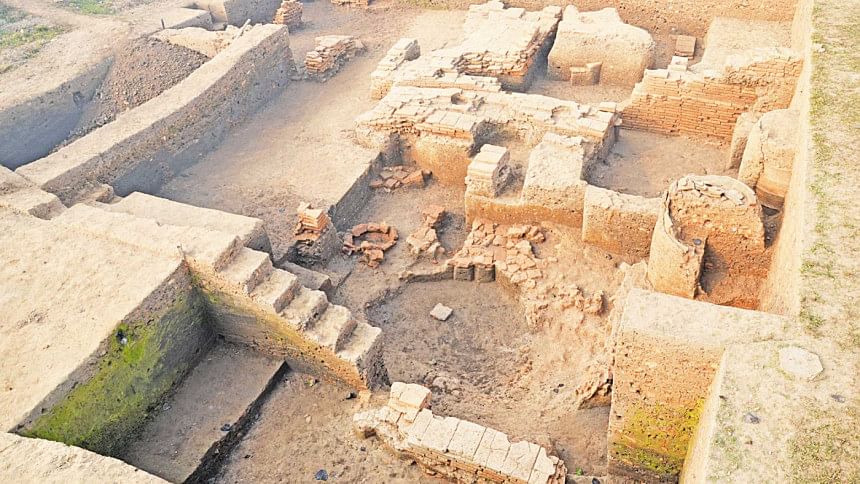30 years of Franco-Bangla Archaeological cooperation

Thirty years ago, in 1992, Bangladesh and France signed a cultural cooperation agreement, which was renewed in 2000. Still active, this agreement marks the longest cooperation between our two countries. Its main objective is to continue the archaeological exploration of the large site of Mahasthangarh, north of Bogra. The excavations are being carried out jointly by the Department of Archaeology of the Ministry of Culture, and more specifically the Regional Directorate of Rajshahi division, led by Naheed Sultana, and a French team. From 1992 to 2012, the latter was led by Prof. Jean-François Salles, from the Maison de l'Orient méditerranéen in Lyon, and then, since 2013, by Dr. Vincent Lefèvre, who is Director of Collections at the National Museum for Asian Arts - Guimet in Paris and is assisted by Dr. Coline Lefrancq.
The site of Mahasthangarh has been known since the 19th century and has been the subject of numerous excavation campaigns. But the cooperation established over the last thirty years has the great advantage of marking a real continuity in research. First of all, it has endeavoured to provide a chronological framework for the city, thanks to several years of stratigraphic exploration (along with radiocarbon dating) of key sectors of the city: the eastern rampart, from 1993 to 2000, and the Mazar sector, to the southeast of the citadel, from 2001 to 2011. This made it possible to phase in a very long occupation sequence that stretches from the 4th century BCE to at least the 14th century CE and to show that, although the rampart has been rebuilt many times, its overall layout is original and dates back to the foundation of the city. The excavations also made it possible to document periods for which written sources are rare or non-existent. For example, traces of an important siege were discovered, which can be placed towards the end of the 7th century, or of an earthquake which seems to have affected the city in the 13th century.
Since 2012, while the general chronology is better known, joint research has focused more on the urban organisation of the site. The excavations have thus focused on a sector located to the south-east of the Bairagir Bhita temples, on the axis that runs from the north-eastern gate to the Mazar sector in the eastern part of the citadel, i.e. on the side of the Karatoya River, which environmental studies carried out in conjunction with the excavations have shown to have once been a very large river, probably as important as the present Padma and Jamuna.
Unlike the French team, which is usually able to carry out only one mission per year, the Bangladeshi archaeologists are naturally on site and thus have the opportunity, outside the joint programme, to excavate other parts of the city—notably the Bairagir Bhita temples—and other sites in the vicinity, such as the Buddhist monasteries of Bihar and Vasu Bihar.
However, the excavations—and the publications that result from them—do not constitute the totality of the French-Bangladeshi cooperation, since it also includes a very important training component. This takes the form of hosting young Bangladeshi professionals during excavations, but also of regular internships in France, or even practical seminars organised on site, for example on the conservation and management of excavated material.
Of course, the Covid-19 pandemic put a stop to this fruitful cooperation for a while. But at the beginning of 2022, the French team was finally able to return to the site and a new excavation campaign is planned for the end of the year. It is now a question of exploring the western part of the site, where there are no visible archaeological remains. This will lead to a new methodology, giving less importance to extensive excavations and more to soundings and the use of remote sensing tools and, if possible, the use of a drone.

 For all latest news, follow The Daily Star's Google News channel.
For all latest news, follow The Daily Star's Google News channel. 





Comments